Tessa comes of age as the advent of Independence on a small British Caribbean island disturbs the status quo and establishes a new class and race hierarchy in a country that historically was a polyglot nation. As East Indians living in straitened circumstances in a city in which the social mores are now dictated by the white, mixed race, and well-to-do Blacks, Chinese, Syrians, and Portuguese, the family is under siege as they struggle with financial hardship and discrimination when they are forced to move from their beautiful home in Port of Spain to a much smaller house in the impoverished suburb of San Juan de la PIna. The family’s social life is centred around the Catholic Church and their extended family, and they have their own prejudices as Tessa discovers when the restrictions placed on them by being Catholic hampers her family’s ability to improve their circumstances. Winning entrance into the most prestigious Convent School in the Port of Spain is Tessa’s only hope to get the education she needs to climb out of poverty and break free of the racism that seeks to define and restrict her life.
Madeline Coopsammy was born in Trinidad, West Indies, when it was still a British colony. She immigrated to Canada in 1968, where she attended the University of Manitoba and graduated with B.Ed and M.Ed degrees. Her poetry and short stories have been published in anthologies and journals across Canada and the United States, and her poetry book, Prairie Journey was published in 2004. She is a regular book reviewer for the Winnipeg Free Press, Prairie Fire, and the Indo-Canadian Telegram. Currently retired from teaching, she is enjoying writing, reading, international gourmet cooking, entertaining, and her three grandchildren.
In her second year at Convent of the Sacred Heart, Tessa and Angela Spence became close friends. Angela was from Meadowbrook. She had white skin, but her hair was “pressed” or straightened with a hot comb. Tessa and Angela were often at the back of the room having fun, paying little attention to the teacher at the front, but they were always careful not to be found out. Tessa would often stop off in the pirate taxi, which plied The Main Road between San Juan de la Pina and Meadowbrook, to visit Angela’s house after school. She would then return home before it was dark.
Tessa had made the mistake of asking Angela about the Venezuelan boy she had seen in the group of boys and girls with Angela. Tessa thought he was cute. His name was Roberto Cadiz. They were all at a bingo being held at Our Lady of Lourdes College. Bingo was something new to the island and this was a big social event. Everyone was dressed in their finest. Once Angela realized that Tessa had her eye on Roberto, she kept whispering “Roberto, Roberto” in Tessa’s ear whenever she could. Tessa got tired of it and wished she hadn’t said anything to Angela.
Even when they were in the chapel, where they prayed the Litany of the Saints and they had to respond, “Have mercy on us,” Angela would tease her with the words, “Have mercy on Roberto.” Tessa was embarrassed and feared that one of the nuns would hear. The chapel was a place where it was impossible to suppress giggles or laughter whenever it came upon you. It was as though the quiet and solemnity created a tension that could only be relieved by giggling or laughing. One day Angela had a laughing fit she could not control, and, soon, the nun behind her did not hesitate to give her several sharp stinging slaps on her shoulders. Tessa knew that Angela carried things much too far, but found her great fun.
Tessa would never forget one particular day in Sister Monica’s class. She and Angela were exchanging notes and giggling over the map of the United States while Sister Monica was pointing out the rivers, the different states, and the physical layout of the country. Tessa and Angela were vying with each other to see who could find the most names of places and titles in the western movies they had seen. They giggled when one of them found Rio Grande, Red River, and Oregon Trail, and the other pointed out the Mississippi River, Dakota, Fargo, Montana, Minnesota, California. It was exciting to see all these names on a real map.
Sister Monica, the geography teacher, was one of the nicest nuns in the school. She never reported or scolded them. Shortly after this particular lesson, Sister Monica was suddenly transferred to a school on a smaller Caribbean island. She had not been there long when news of a tragedy that had befallen her came back. They were horrified to discover that she had been decapitated. It was a backlash against the whites when independence from Britain was in the air. The students who had loved her grieved for her and for the hate and the racial tension that were being unleashed in the name of Independence.
At the end of the year, Tessa was not promoted with her classmates. When her report card came, she cried bitterly. Sylvia was standing with her on the street outside their house when the mailman handed her the envelope.
“How could they do this to me?” she sobbed as she read what was in it. Sylvia took the report card from her and read it.
“What?” she exclaimed. “You failed English? You who always telling us the teachers read out your essays and stories to the rest of the class, and you always having the right answer in English class when nobody else have it? What is going on? There must be a mistake.”
But there was no mistake. Tessa had passed every subject but English, which had been her forte for as long as she could remember. She had always been the best essay writer in her class, even in elementary school. At the age of ten, when she had discovered she could understand the novels of Zane Grey, she was ecstatic that she could read adult books with no trouble. Her male cousins and her brother swapped these western pocket books they bought from the second-hand store. There were no children’s books available, but there were lots of Zane Greys around—The Riders of the Purple Sage, Last of the Plainsmen, The Light of Western Stars, The Lost Wagon Train, West of the Pecos—all exciting and romantic adventures of the Wild West. After that, she went on to read the Victorian novels her mother and aunts read: The Rosary, The Woman in White, East Lynne, Ramona, A Death in the Family, The Way of All Flesh. The City Council had recently opened a branch of the public library in San Juan de la Pina, and Tessa and Sylvia borrowed one novel a week, all that they were allowed, and read them voraciously. They moved on from the Abbey Girls series to read Elizabeth Gouge, A.J. Cronin, Taylor Caldwell, and other popular writers of the time. Once they discovered a writer they liked, they sought out the rest of his or hers books and methodically went through the shelf. All this reading had given Tessa a wide vocabulary and a taste for writing. To lose her year by failing English? The unfairnesss was heart-rending.
Tessa thought hard and long about why she was being punished. Was it because she had been labelled an idler by fooling around with Angela for most of the year? Sister Aloysius had threatened that she, and not their regular teacher, would mark the English papers for their final exams that year. Sister Aloysius had been enraged when it had been reported by the teachers from St. Francis boys’ school across the way that the girls in Tessa’s class had been directing mirrors in the midday sun into the boys’ classroom, which was across from theirs.
“This whole class is a bundle of trouble,” Sister Aloysius had ranted. “Your behaviour has been extremely wild and unacceptable. To think that you would have nothing better to do than this, is disgraceful. You will have to be severely punished. For this and for your many other sins, I will be the one to decide who will pass and who will fail this year. I will make it my business to mark your English exam papers at the end of the year.”
Tessa had not given this threat a second thought. Wasn’t she always at the head of her class in English? It was the other subjects she had to worry about. The school never gave out prizes. Her sister and brother always had a prize-giving day at their school. The only time a prize was offered at the Sacred Heart Convent was in commemoration of some important anniversary the Pope was celebrating. Tessa had won the prize for writing the best essay on the Pope, his duties as head of the Roman Catholic Church, his life in the Vatican, and his summer residence at Castel Gandolfo. When she found out that Sister Aloysius had failed her in English while she had passed everything else, she realized something was terribly wrong. She then remembered when she had been summoned to Sister Aloysius’s office and what had transpired between them.

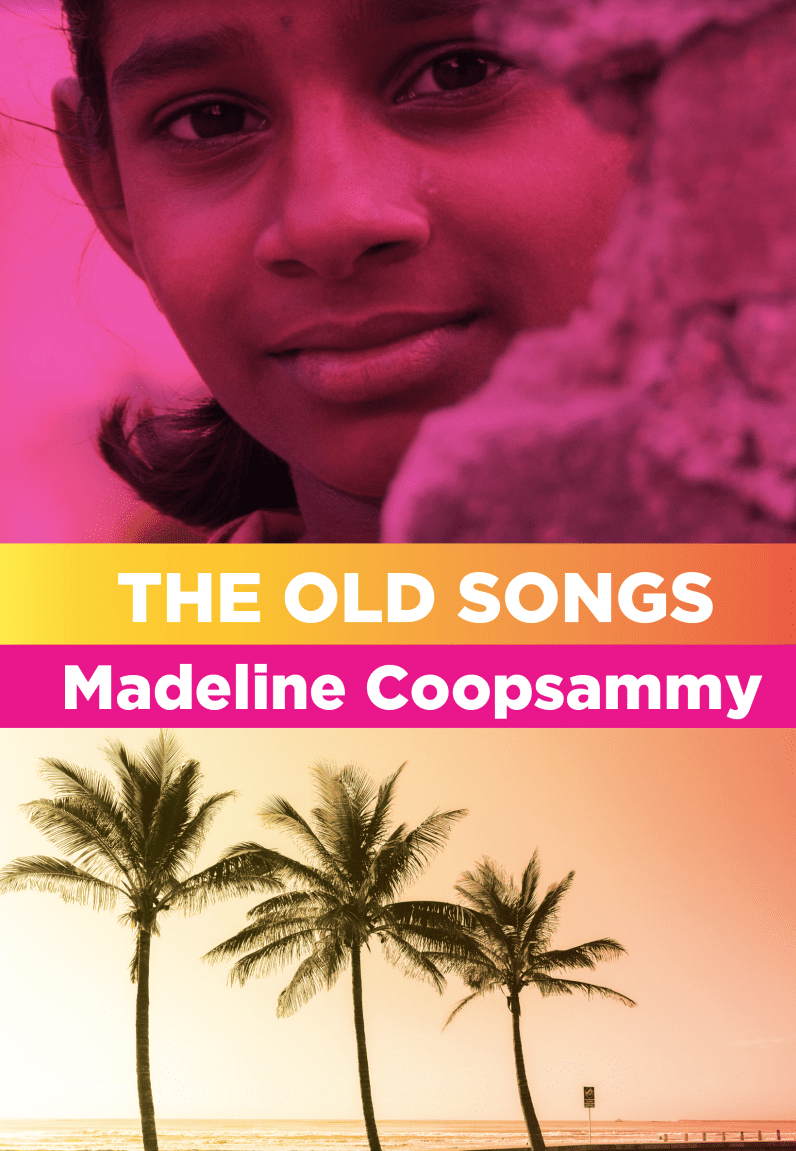

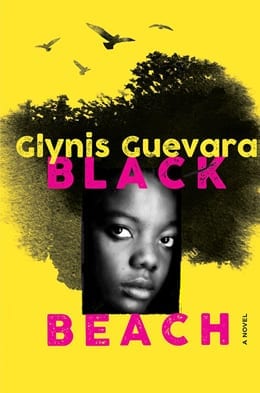
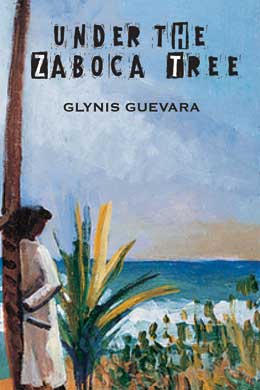
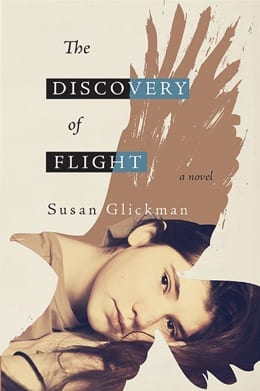

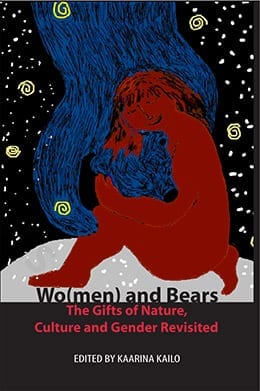
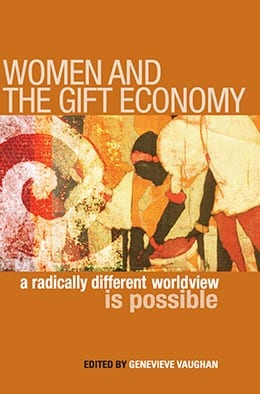
Chasity Findlay –
The Old Songs by Madeline Coopsammy
reviewed by Chasity Findlay
CM Magazine Volume XXV Number 28 – March 29, 2019
https://www.cmreviews.ca/node/672
Grades 7 and up; Ages 12 and up
Excerpt:
“I sure hope The Mighty Dougla win the Calypso King Contest this year,” said Clyde. “That calypso is telling a truth people don’t understand. Because all of us have nowhere else to go, so must stay in this island. And, we all come from someplace else, starting with the Spaniards who killed off the Aboriginals by putting them in reserves and working them to death. Some of the Indians poisoned the Capuchin Monks, while some others threw themselves off a cliff rather than be enslaved any more. The Spanish allowed French people to the island because they were Catholic too. And when slavery was finished, the British and French plantation owners brought indentured workers from Portugal, China, and India, because the white planters couldn’t do the work in the hot sun.”
“And the Portuguese and Chinese couldn’t stand the hard work in the fields, either, so they went off and opened shops and businesses. But what I don’t understand is why the half-white people, the ones we call ‘red-skin’, believe they better than us?” Manny asked. “They have white skin but they have Black blood in them too, like me. And they have curly hair like mine.”
“Well, that,” said Clyde, “is because many white plantation owners had children with their Black slaves, and then they brought these children in from the fields into the house and educated them. This is why the ‘red-skin’ people always lording it over people like us. They had a head start over us Indians who came after them. But then the Syrians came, selling cloth. First, they carried the cloth in bundles on their heads, and later in suitcases, and very soon they move on to buy stores in Port of Spain, and now they richer than everybody else; they even have more money and business than the old English and French creole families. And now every race in this little island looking down on every other, instead of trying to get along when we all have to live in this little thirty-seven-by-fifty-mile island.”
Clyde knew all this from his West Indian reader history classes but also because he was a tireless reader of sociology, politics, and anthropology, and he always had information on all these topics at his fingertips.
Lucille added to Clyde’s diatribe, saying that they believed the people from Africa and India, should get along peaceably because they needed each other. They were both oppressed by the other racial groups on the island and were at the bottom of the barrel, she added. Tessa was surprised when her mother said this, for in the past she had heard Lucille and her sisters discussing suitable marriage partners for their children, and she knew that they did not approve of anyone in the family marrying a Black person. Adults have their own rules about everything, Tessa reflected. And they were so confusing.
Tessa Joseph is growing up during the age of independence from British rule in Trinidad, West Indies. As a country that has historically been ruled by white colonists gains independence, new, unofficial racial hierarchies develop. In addition to the white families, mixed-race, well-off Blacks, Chinese, Syrians, and Portuguese citizens dictate the social practices of all those living on the island. The East Indian families, including Tessa and her family, the group to most recently call the island home, find themselves at the bottom of the social ladder, having been brought over as agricultural workers after slavery was abolished.
Existing alongside the race-based social hierarchy, the racism that Tessa’s family faces pervades all aspects of their lives, including their social interactions, faith, school experiences, and the future educational and careers prospects of Tessa and her siblings. In addition to these challenging circumstances, the Joseph family is dealing with financial hardships, having had to move from their comfortable home in a middle class neighbourhood in Port of Spain, to a much smaller home in an impoverished suburb of San Juan de la Pina, after the death of Tessa’s father.
A perceptive and wise young lady, Tessa realizes that her family has its own prejudices and rules that she finds confusing. A diligent student, Tessa earns a spot to a prestigious Convent School, where she continues to face racism and classism from her fellow students and teachers alike. As the years pass, Tessa comes to recognize that her future opportunities are limited in Trinidad, and that her best chance at breaking free of poverty and racism is to throw herself into her studies and use her love of education as an opportunity to escape her circumstances.
The Old Songs is author Madeline Coopsammy’s latest offering for Inanna Publications’ “Young Feminist Series”. She has also authored a book of poetry, Prairie Journey. Additionally, her poems and short stories have been published in various anthologies and journals across North America, and she is a regular book reviewer for several publications, including the Winnipeg Free Press. Like the protagonist in this novel, Coopsammy grew up in Trinidad. The author attended university in India before immigrating to Canada in 1968 and completing B.Ed and M.Ed degrees. Currently retired from teaching, Coopsammy is spending her time writing, reading, and mastering the art of gourmet cooking.
Coopsammy has skilfully developed the protagonist in this novel through showing, not telling, readers exactly who Tessa is. Readers will gain a sense of what Tessa espouses as she comes of age throughout the novel via her actions, thoughts and reflections, and interactions with her family, peers, and other people in the community. As the identity of Tessa emerges through the prose, Coopsammy paints a picture of Tessa, a young feminist growing up in the 1940’s and 1950’s. An independent thinker who works hard at her studies in order to defy the expected life course for a young woman in that era, whilst also rising above other forms of oppression, such as discrimination based on race and breaking the cycle of poverty, Tessa is a worthy role model for young readers.
The Old Songs also provides historical and cultural perspectives that many readers may be reading and learning about for the first time. Throughout the text, the narration and dialogue reveal information related to Trinidad’s historical and cultural background, including the country’s history as a British colony, its independence, the immigration patterns of various groups that inhabit the island, and how the current and past racial hierarchies affect all aspects of life on the island, placing barriers on various residents in particular racial groups and subjecting them to discrimination daily. Older readers in the target audience may also find themselves making connections to various other current and historical instances of racism and social injustice in the world, as well as closer to home, here in Canada.
The Old Songs is a well-crafted coming-of-age story that expertly weaves in multicultural, feminist, and social justice perspectives. This book would be a valuable and relevant read for young people in the target audience in order to gain a well-rounded perspective on racism, oppression, identity, and gender equality. The Old Songs would be a valued addition to any classroom, school, or home library.
Highly Recommended
Reviewer:
Chasity Findlay is a graduate of the Master of Education program in Language and Literacy at the University of Manitoba and an avid reader of young adult fiction.
Renée Knapp –
The Old Songs by Madeline Coopsammy
reviewed by Alana Schlotter
Resource Links Volume 24 Number 4 – April 2019
Grades 4-7
The story of Tessa Joseph and her family who live in an impoverished neighbourhood in Port of Spain on the Caribbean Island of Trinidad; it is not only a time of change for the small island nation as it gains independence from Britain, but for young Tessa as well as she is coming of age at the same time. While she is coming to terms with the new circumstances her family finds themselves in, she learns how to navigate her way in a world she doesn’t always understand. Tessa’s only way of getting out of the poverty she finds herself in and the racism she experiences daily, is with the education that she will receive upon gaining entrance to a prestigious convent school. However it will not be an easy road that she will have to follow.
The Old Songs, in tackling potentially difficult subjects like poverty, racism, access to education, and religious differences, is a book with a very timely subject matter. Set against the backdrop of a country as it struggles to redefine itself the book would be well used to help broach these topics while focusing on an area of the world, at a time, not always focused on.
Thematic Links: Young Girls; Trinidad and Tobago; Poverty; Education; Racism
Renée Knapp –
The Old Songs overcomes challenges
reviewed by Debbie Jacob
Trinidad and Tobago Newsday – May 20, 2019
https://newsday.co.tt/2019/05/20/the-old-songs-overcomes-challenges/
In The Old Songs, a coming-of-age novel by Madeline Coopsammy, Tessa Joseph and her East Indian family struggle to adjust to life in Port of Spain just before Independence.
Tessa’s widowed mother, Lucille, had grown up with a generation of Indian indentured servants who got their strength and support from their cultural ties, but Lucille must break with tradition in many ways to raise her children and give them better opportunities in life. For Lucille, survival means cultural adaptation, moving across town to a new house and even adopting a new religion so that her children can attend Catholic school.
Coopsammy faces all the challenges of writing a coming-of-age novel.
First, the trick is to show the cultural context that shaped the protagonist’s life without being too didactic. It’s the classic case of show-vs-tell so that readers can feel the protagonist’s story rather than be told about it.
Then there is the challenge of making a coming-of-age story equally appealing to readers both inside and outside the main character’s cultural circle. Authors must weave cultural information through a novel seamlessly without breaking the narrative flow so that a foreign audience can understand the setting, but local audiences don’t feel they are receiving a lesson in their own culture. It is like embroidery. The stitches are there, but they are invisible to the naked eye because they combine to create a cohesive picture. If the author does not pull this off, the writing often feels stilted and didactic or preachy.
The Old Songs, published by Inanna Publications and Education Inc is able to tackle some of these challenges.
Dialogue must always propel a story forward. The dialogue in The Old Songs is often filled with anecdotes about the past, which impedes the forward movement of the story. Anecdotes are important, but they are better placed in narration where they don’t interfere with the plot moving forward.
The novel is ambitious in its themes which include family, education, racism and independence. A chapter on Carnival and Hosay provides foreign readers with basic information about these cultural and religious events. I found the juxtaposition of these two chapters quite interesting for their discussions on religion vs entertainment and their ability to show the cultural complexity of Trinidad.
Like many novels The Old Songs could have been polished a bit more when it comes to narrative flow and structure. What I found most interesting in the novel was the author’s treatment of words she chose to feature from Trinidad dialect. She was very adept at showing how diction – particularly in dialect – creates meaning and a different level of understanding. Discussions about dialect revealed important cultural biases, which were crucial for understanding the story.
Discussions about migration at the end of the book created a full circle back to the beginning. In the end, Tessa faces the same heart-wrenching decision as her mother on whether she should move in order to better herself. For Tessa’s mother, the move was merely across town. For Tessa, the move means studying abroad. She can’t imagine a life in which she won’t return to Trinidad. The question is, will the culture of Tessa’s childhood sustain those plans to return home after she garners new experiences abroad?
The Old Songs raises many questions about adapting to a changing culture.
Renée Knapp –
The Old Songs by Madeline Coopsammy
reviewed by Faith Johnston
Prairie Fire Magazine – December 9, 2019
https://www.prairiefire.ca/the-old-songs-by-madeline-coopsammy/
Coopsammy’s novel, set in Trinidad in the 1950’s, features Tessa Joseph who is eight years old when the story begins and nineteen when it ends with her leaving the island, having won a scholarship to attend university in Delhi. Tessa is an avid reader who dreams of becoming a writer “like Jo in Little Women” (p.91), but she gradually realizes that in Trinidad’s racist society she will never have a chance of success.
This novel has been tagged as young adult fiction, but it is more than a coming-of-age story. It is a detailed and rich portrait of life on the island in the era just before it gained independence in 1962. Along with Tessa and her family readers explore the neighborhoods of Trinidad’s capital, Port of Spain, attend the annual festivals there, and taste the unique food. We also and learn some colourful expressions that have evolved in this early multicultural society, such as “cockroach don’t belong in fowl party”(p. 129), meaning that if you mix with your betters you will be targeted. Then there is the frequently used term “steupsed,” meaning to suck air through your teeth in disapproval.
One of the strongest characters in the novel is Lucille Joseph, Tessa’s mother. Lucille is a Catholic of East Indian origin, and a woman determined to live her life as a Christian, westernized woman, even if, no matter what she does, she will be classified as low-class because in the eyes of most people she will always be a “coolie.” This a truth that Tessa gradually realizes through incidents of discrimination she experiences while attending a prestigious Catholic school. But she knows her mother will never make a fuss or question the authorities because staying in school is the only possible road to a better life.
Thus readers learn, through the life of Tessa and her family, that colonization is not just a matter of political control, it permeates everyday life from one generation to another. Even the Josephs have their own prejudices about less sophisticated East Indians who still work on farms. And they know virtually nothing about their family history except that their ancestors came from India as indentured labourers in early the nineteenth century, after slavery was abolished in the British empire.
There is no strong plot here. The story is told in a series of episodes beginning with the family’s move to a poorer neighborhood after the death of their father. Some of the dialogue between the young people in the family and their friends is clearly intended to provide information to readers, but the pronouncements of Tessa’s mother, Lucille, are always very real. And so is the mixture of emotions Tessa experiences on leaving her home at the age of nineteen. She knows she must leave, but already longs to come home again: “never to relax on the beaches … hear the roar of the Atlantic … drive through mountains where the pink and yellow poui trees were in bloom … feel the throb of the steel drums … was unthinkable.”
Madeline Coopsammy emigrated from Trinidad to Canada in 1968. Her poetry and short stories have been published in journals and anthologies in Canada and the United States. Her poetry collection Prairie Journey was published in 2004.
Renée Knapp –
More Stories
The Old Songs by Madeline Coopsammy
reviewed by Bridget Brereton
Trinidad Express – September 23, 2020
https://trinidadexpress.com/opinion/columnists/more-stories/article_42986430-fdfb-11ea-8b85-7fc329241095.html
Over the last few days I’ve been tuned in to two virtual literary conferences: the wonderful Bocas Lit Fest, now in its tenth year; and the UWI-organised LITTCON 2020, on T&T literature between 1980 and 2020. Nearly every panel called for more people to tell, write and share their personal, family or family or community stories, whether in fictional or non-fictional forms.
I recently read a novel by Trinidadian/Canadian writer Madeline Coopsammy, The Old Songs (2018). This is definitely an autobiographical novel, in that the childhood of her heroine closely parallels her own. I read this book as a fictionalised memoir of the author’s life in Trinidad in the 1940s and 1950s.
The Old Songs tells the story of Tessa, a girl born in 1939 to an urban, Indo-Trinidadian, Roman Catholic family. Her family was from Boissiere Village in Maraval (called “de Gannes” in the novel), where there was a small but culturally distinct community of people of South Indian ancestry, originally Ta mil-speaking, Roman Catholic, and with links to Martinique.
When Tessa and her siblings were born, her family was living in a big house in the middle-class suburb of Woodbrook (“Meadowbrook” in the novel). But her father died and her mother was cheated out of her property, so in 1947 they moved (at night, so the neighbours wouldn’t see how little furniture they had) to a much smaller house in a new housing development in “San Juan de la Pina”-St James. This was definitely a step down, but the family was always “respectable” and Tessa’s mother was disdainful of “ordinary” folks, whether African or Indian.
Part of the book portrays a child hood in St James in the late 1940s and 1950s, and so can be compared With Theresa Awai’s stories in Swing High, Iron Pot. The Western Main Road was a busy commercial street, lively all day and night, but Tessa wasn’t allowed to go there alone: it was peopled with drunks, prostitutes, American soldiers and mad “characters”. Unlike Awai, Tessa was too “respectable” to be permitted to join the boys’ games in the open spaces of the suburb; she and her sister were more or less confined to the small home and tiny yard, apart from school and church.
Tessa is an Indo-Trinidadian who is Christian , but not Presbyterian; she belongs to the Catholic Church where Indians are a small minority. She’s completely “westernised”- she speaks no Hindi, Tamil or Patois; her dress, hairstyle and language are English; she’s embarrassed by country relatives who are “old-time” Indians and Hindus; here lifestyle is urban. In a sense, as the novel makes clear, she belongs to a rather isolated community, a minority of a minority.
Tessa goes to St Joseph’s Convent in 1950, where she is one of about 20 Indian girls out of around 600. The novel depicts the many kinds of discrimination she faced in this school, from the white nuns and lay teachers; there was pervasive prejudice against all the girls who were not white or very fair-skinned . All the same, she saw the school as a haven of peace, order and “civilised” behaviour.
After 1956, the novel depicts the fears held by many Indo-Trinidadians that the new PNM government would discriminate against them, and would encourage “douglarisation”. Was there any future for a girl like Tessa in the new Trinidad? Everyone wanted to go away; “it was the age of migration”.
Like Coopsammy, Tessa gets a scholarship from the Indian government to study at a university in India; she accepts it despite all the warnings against going to a place even more backward than Trinidad…
Coopsammy’s novel opens another window to the Trinidad of the 1940s and 1950s. lt’s a good example of the kinds of stories the literature community is calling for.
Bridget Brereton is professor emerita of history at The UWI, St Augustine.